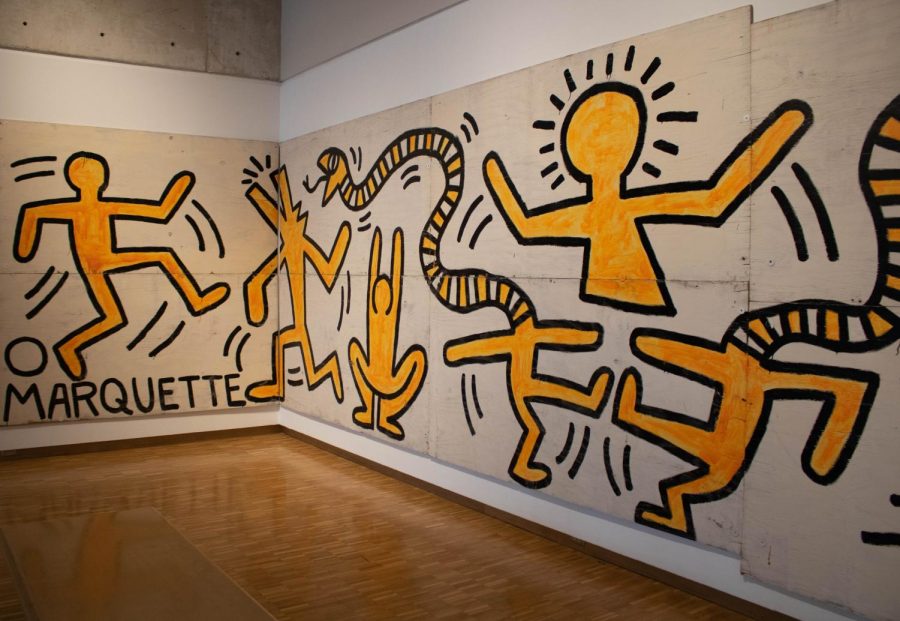When former director of the Haggerty Museum of Art Curtis Carter brought Keith Haring to Marquette to create a mural, he has no idea Haring will become such a big name in art.
Haring’s “Construction Fence” is a nearly 100 feet long painted fence that surrounded the Haggerty’s construction site in 1983, the year before the museum opened. The fence is double sided and consists of numerous outlines of figures, such as dogs and babies. Everything is filled in with a bright yellow-orange color. “Marquette” is painted in one corner. Part of the mural is on display right now, while the rest is in the Haggerty’s permanent collection in storage.
Haring was a famous artist in the 1980s, according to the Keith Haring Foundation. He is featured in over 100 solo and
group exhibitions.
He was diagnosed with AIDS in 1988. In 1989, he
established the Keith Haring Foundation with the purpose of funding and providing works of art to AIDS organizations and children’s programs, as well as expanding the audience for Haring’s work.
Haring died of AIDS-related complications at the age of 31 Feb. 16, 1990.
Haring continues to attract a wide audience through his direct, accessible and social messages.
In the early 1980s, however, Haring is still relatively unknown. Carter meets Haring and sees his work in New York.
“I thought that could be interesting,” Carter says.
Carter is looking for ways to promote the new museum and asks Haring to come paint the temporary construction fence surrounding it while it is being built. Haring’s interested and says yes.
Haring comes to Milwaukee, and only stays for a few days.
Students and other people from the community came to watch him paint, Carter says. Haring eventually appears on local news.
The president of Marquette University at the time, John P. Raynor, comes and blesses the mural. It stays up through the following summer. The Haggerty takes it down shortly after construction is complete. When the museum opens, Carter says he put parts of it
on display.
“People began to like (the mural) more and more, and he became more and more famous,” Carter says.
Haring gifts the mural and another work to the museum for free, which is now featured on the Haggerty Museum of
Art’s t-shirts.
“I’m very happy the piece turned out to be … a signature piece of the museum,” Carter says.
Haring’s work continues to inspire students at Marquette.
Carly Ogletree, a senior in the College of Arts & Sciences and member of MU Art Club, says she has a Haring-inspired bedroom as a kid.
She says he is one of her favorite artists of the 20th century and his art is obviously iconic, but his activism and philanthropic efforts are the most powerful part of his legacy.
“Having Haring’s work in the museum adds to the academic life of the university,” Ogletree says. “I believe that Haring’s life also aligns deeply with Marquette’s Jesuit mission — he was truly a ‘man for others.’”
Ogletree also says Haring’s status as an LGBTQ activist shows the university supports those from minority or
marginalized groups.
Haring’s work and legacy lives on in the Keith Haring Foundation, which continually works to assist children and organizations involved in education, research and care related
to AIDS.


